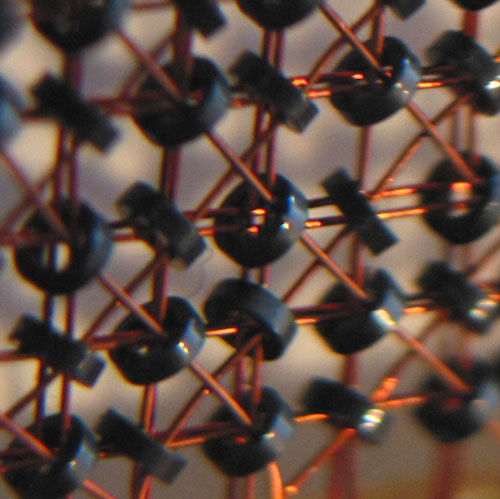
Posted on 12/23/2008 6:05:02 AM PST by Red Badger
Toshiba announced today the expansion of their line up of NAND-flash-based solid state drives (SSD) with the industry's first 2.5-inch 512 GB SSD and a broad family of fast read/write SSD's based on 43 nanometer Multi-Level Cell NAND.
In addition to the 2.5-inch, 512GB drive, the 43nm NAND SSD family also includes capacities of 64GB, 128GB, and 256GB, offered in 1.8-inch or 2.5-inch drive enclosures or as SSD Flash Modules.
These 2nd generation SSD's offer increased capacity and performance for notebook computers. They utilize an advanced MLC controller that achieves higher read/write speeds, parallel data transfers and wear leveling to optimize performance, reliability and endurance.
These drives enable improved system responsiveness with a maximum sequential read speed of 240MBps and maximum sequential write speed of 200MBps. This faster response time enhances overall computing experience and allows for faster boot and application loading. The drives also offer AES data encryption to prevent unauthorized data access.
Toshiba as well as many market analysts expect SSD's to begin significant deployment in the market in 2009. With further growth, in the notebook market, expected around 10% by 2010 and 25% by 2012.
The new drives provide a high level of performance and endurance for use in notebook computers, gaming and home entertainment systems. These SSD's will be showcased at International CES 2009 in Las Vegas, Nevada from January 8 - 11, 2009. Mass production will begin in the second quarter of 2009 (April to June).
I had one of those!!!! Won it as a freebie gift from a time share...............

I had (still have, actually) one of those!
And with the massive 16K memory add-on. I used electrical tape to try to stabilize it, but sometimes it would still jiggle and freeze the computer.
I wrote some good programs on that thing.
Yup. Reloaded a DEC 8810 from floppy once. Took forever.
I now carry more memory in my pocket every day than we had in our entire datacenter back in the day.

“Had a good laugh as we were selling 64k ram business systems for $6,000.”
I had one of those, a North Star Z80, as a house controller. It ran until December of 2006, when I left the liberal north east. I found after shutting the boxes down that I had hidden any humidity problems in my basement for decades. The heat they generated always kept any dampness from coming in.
I still use Borland Quattro Pro for a spread sheet. It does work on XP.
Routinely.
But I suspect we're not talking about the same thing.

We now know that anyone left on this thread is a solid, super-duper, senior.
If I'm not mistaken, you're off by a factor of 4. I believe that the base model came with 64K of RAM and, as I recall, a cassette tape interface. If there was no tape drive connected, the system would boot into a ROM BASIC interpreter. The 360Kbyte 5 1/4-inch floppy drive was an extra-cost option.
I opted for the massive 10 meg hard drive rather than the then-current 5 meg version for only an additional $250 or so over the $250 5 meg model.
8 inch floppy
256K, 512K, and ONE MEG.
SDSS, DDSS, DDDS
Hard-sectored or soft-sectored? :=)
And yes, I've used both.
CP/m?...........
Around that time I was working for a company that manufactured 40Mb (Not Gb) hard disk drive units that were the size of a kitchen dishwasher. The 12” disk platters were removable; they were in a caddy that fit on top of the unit.
You bet your BDOS. :=) But not on the PC.
UYK-7 USN Computer then we went to DDFM.
Imagine if IBM had went with CP/M instead of MS-DOS, where would we be today?............
and the AN/UYK 20
I loved Lotus123. Excel just isn’t as much fun.
Disclaimer: Opinions posted on Free Republic are those of the individual posters and do not necessarily represent the opinion of Free Republic or its management. All materials posted herein are protected by copyright law and the exemption for fair use of copyrighted works.